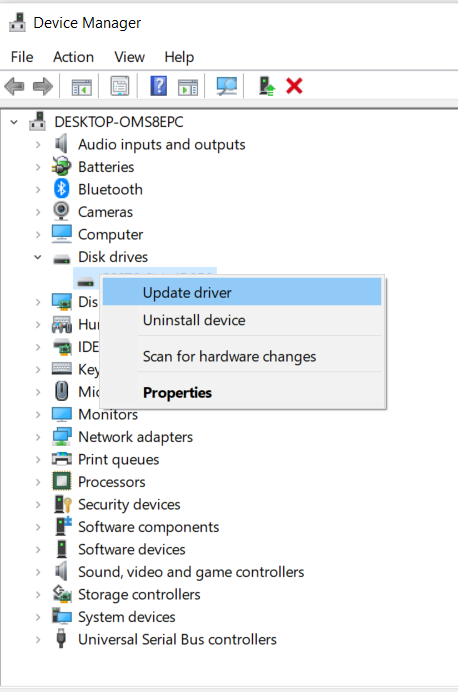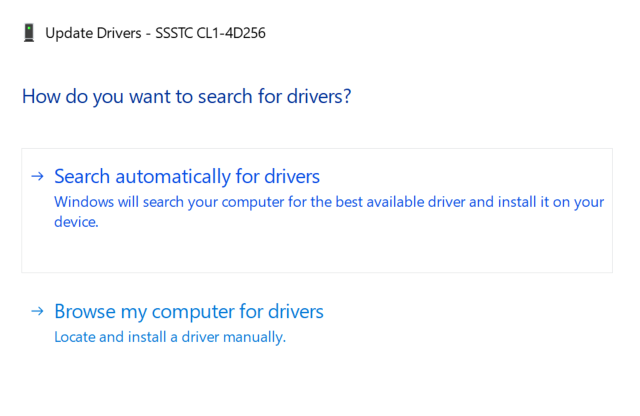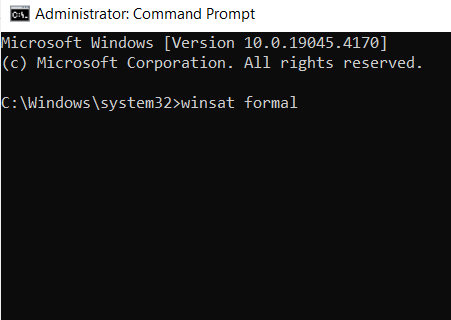You did the right thing by investigating the issue as optimizing SSD as HDD can ruin SSD health, Make sure you turn off the scheduled optimizations when the optimizer shows SSD as HDD
There are a couple of reasons why SSD is being listed as a Hard disk. Here are some troubleshooting you can do to fix this issue.
5 ways to Troubleshoot SSD Being Listed as Hard Disk
These solutions apply when your SSD being misidentified as a hard drive in Task Manager or Disk Management:
1. Check the Model Information
Make use of the model number on the drive or the manufacturer’s diagnostic tools to confirm it’s an SSD. If the model number has SSD in it, it is more of a visual glitch with can be ignored.
2. Disabling Storage Management Applications
If you are using any third-party storage management software, temporarily disable them restart your computer, and check if the software is interfering with Windows to misread SSD as a Hard drive.
3. Update the Drivers
Outdated drivers can potentially disturb the SSD functionality, updating the drivers can help in improved interactions with SSD and use the optimal trim commands for your SSD.
Here is how to update the driver:
- Open Device Manager and expand Disk drives.
- Right-click on your SSD and select Update driver

- In the Update window Search automatically for updated driver software.

Windows will search and install an updated SSD driver, After installing check if the drive is being properly recognized.
You can also uninstall the driver and restart your computer to install a generic driver that could potentially fix this issue.
4. Run winsat Command
Simply run a performance benchmark test using the winsat command to provide the drive performance information and characteristics of the SSD to Windows.
Follow the steps below:
- Open Command prompt as Administrator
- Type: winsat formal and press Enter

This will run a benchmark and update Windows’s data about your SSD drive.
5. Reset BIOS
Incorrect BIOS settings can cause Windows to misread the SSD. Resetting BIOS to default settings can allow Windows to recognize the drive correctly.
WARNING: If you are unsure or uncomfortable seek the help of an expert because Incorrect settings on BIOS can prevent the computer from booting.
Follow the steps below to reset your BIOS:
- Restart your computer.
- During bootup, press the BIOS key (differs for different manufacturers).
- In the BIOS setup, locate and select the option Reset BIOS Settings to Default option or Load BIOS Defaults.
- Confirm the selection when prompted, save the changes, and exit the BIOS setup.
After this computer restarts, Now the SSD should be recognized.
BONUS: What If My External SSD is recognized as an HDD?
Similar to the internal SSD this issue is also a visual bug that can be ignored, as it does not harm the performance of the SSD.
It could be due to wrong connections, try inserting the SSD into the SATA port that uses an AHCI controller to get it recognized. Also, Check if your cable has UASP branding for get optimal SSD performance.
Conclusion
We hope this article helped you resolve the SSD being read as an HDD issue to fix the logical errors
in case of hardware issues like faulty RAM or overheating CPU consult a hardware technician for diagnostics.